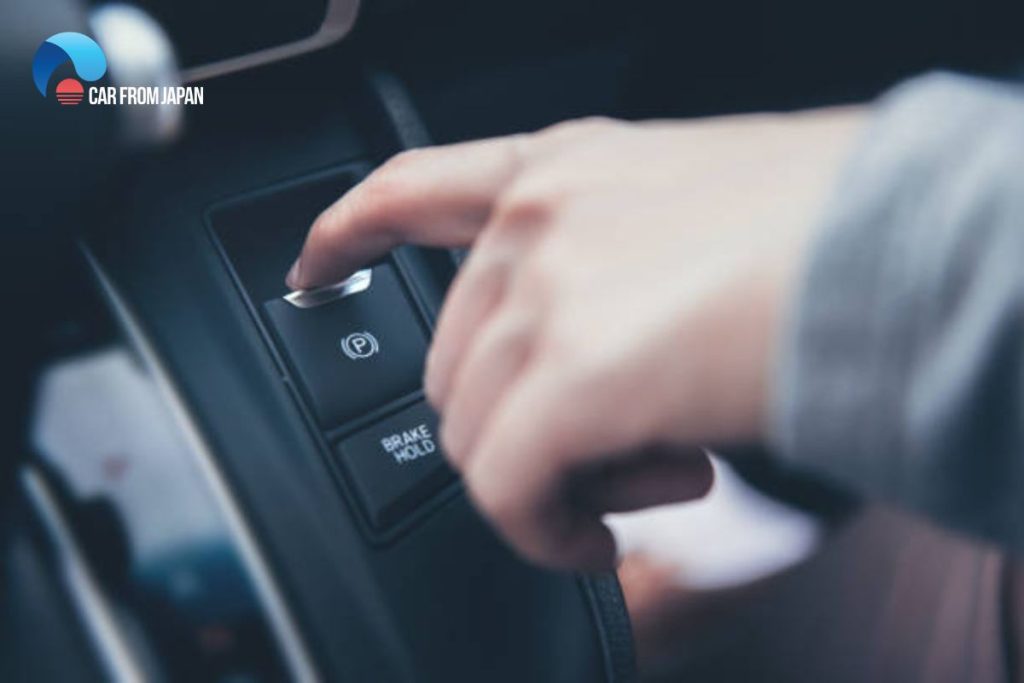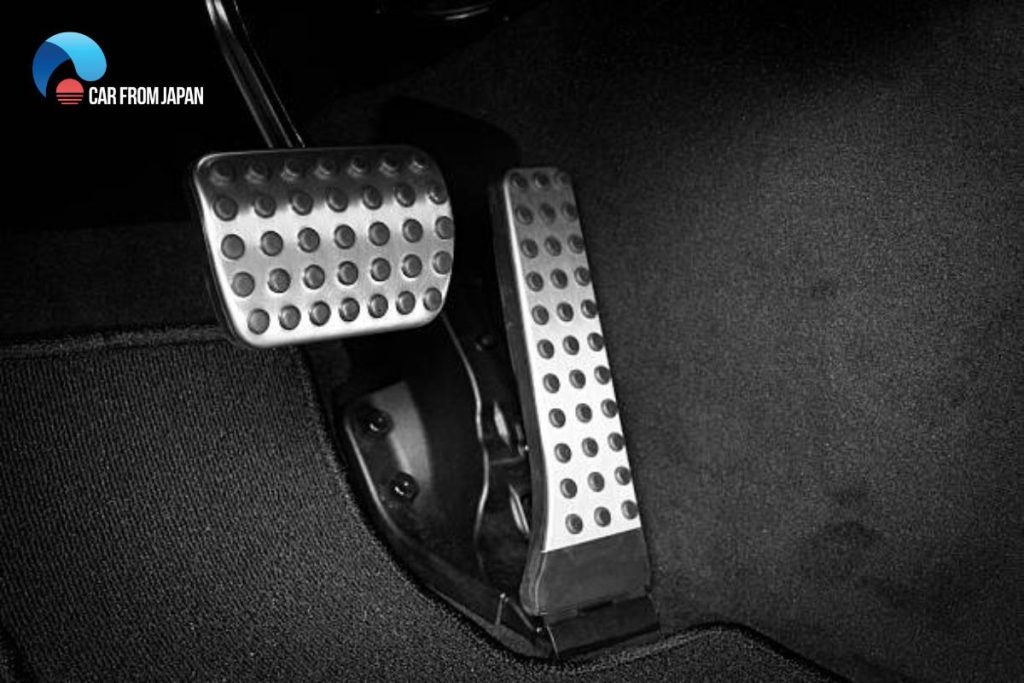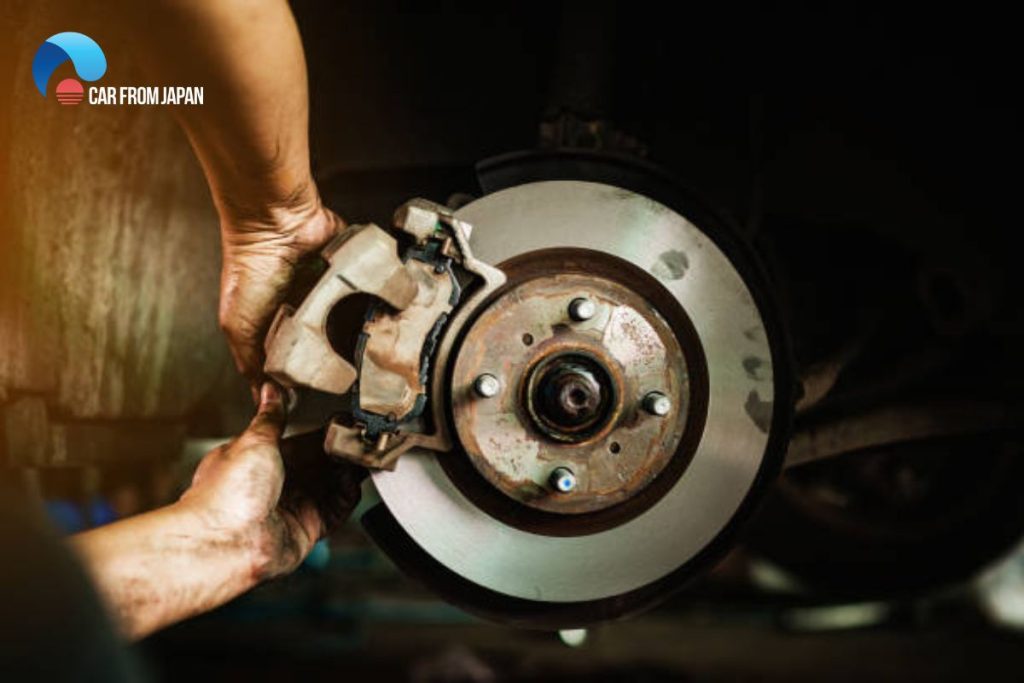When you have to ask yourself why is my brake pedal locked and car won’t start, it’s understandable to feel concerned.
This scenario typically points to safety mechanisms in modern vehicles designed to prevent the car from starting under unsafe conditions. Several factors can contribute to this issue, and understanding them can help you identify the cause and find a solution.
Let’s follow along with Car From Japan to get more information on this topic!
Contents
Brake System Interlock Feature
The brake interlock feature works by using a series of sensors and electronic controls to detect when the brake pedal is engaged. Upon pressing the pedal, a signal is sent to the vehicle’s ignition system to allow the engine to start.
This sequence ensures that the vehicle is less likely to move unexpectedly when the en
gine turns on, thereby enhancing safety for both the driver and surrounding individuals.
A malfunction in the brake system interlock feature can manifest as an inability to press the brake pedal down or a failure of the vehicle’s engine to start despite pressing the pedal.
Drivers might notice that the brake pedal feels unusually stiff or that the usual clicking sound, indicating the interlock system is disengaging, is absent.
Why Is My Brake Pedal Locked and Car Won’t Start: Potential Causes
Faulty brake switch

The brake switch is a critical component that informs the car’s ignition system when the brake pedal is engaged, a prerequisite for starting the vehicle in many modern models.
A malfunction in this switch can disrupt this signal, leaving the system unaware of the pedal’s depression.
Replacing a faulty brake switch, a relatively straightforward and cost-effective repair, can restore the proper signal flow and allow the vehicle to start as intended.
Electrical Issues
The vehicle’s electrical system is the backbone of its operation, and issues here can manifest in various ways, including a locked brake pedal and starting problems.
Dead batteries are a common culprit, unable to provide the necessary power to the vehicle’s systems. Similarly, blown fuses can interrupt the electrical flow to essential components, and faulty wiring can lead to intermittent or permanent disruptions.
Addressing these issues might involve battery replacement, fuse checks and replacement, and wiring inspections and repairs, respectively.
Transmission position sensor
In vehicles with automatic transmissions, the transmission position sensor plays a crucial role in safety by ensuring the vehicle is in park or neutral before allowing it to start.
A failure in this sensor can misinform the system, effectively locking out the start function as a precautionary measure.
Repairing or replacing a faulty transmission position sensor can resolve this miscommunication, allowing normal starting procedures to resume.
Steering column lock
The steering column lock is a theft-prevention feature designed to immobilize the steering system when the vehicle is turned off.
However, if the steering wheel is turned excessively while the vehicle is off, it can sometimes trigger this lock inadvertently, affecting the brake pedal and ignition system.
Manipulating the steering wheel gently back and forth can often release this lock, eliminating the obstruction of car won’t start.
Security system malfunction
Vehicle security systems are sophisticated mechanisms designed to protect against unauthorized use.
However, these systems can sometimes malfunction, misinterpreting a situation as a security threat and immobilizing the vehicle as a result. This can involve locking the brake pedal and preventing the engine from starting.
Resetting the security system, if possible, or using the correct key can often bypass this false alarm, allowing the vehicle to start normally.

Defective ignition lock cylinder
The ignition lock cylinder is where the vehicle key is inserted to start the car. Wear and tear or damage to this cylinder can make it difficult to turn the key, disrupting the sequence needed to start the vehicle and indirectly affecting the brake pedal mechanism.
Replacing a defective ignition lock cylinder is a solution that, while potentially more costly and complex, addresses the root of the problem and restores functionality to the ignition system.
When addressing an issue why is my brake pedal locked and car won’t start, due to potential malfunctions in the brake system interlock feature, the process involves several crucial steps, starting from initial checks to more in-depth diagnostics and repairs.
Diagnosing and Fixing the Issue
Initial checks
A depleted or weak battery can fail to provide the necessary power for the vehicle’s electronic systems to function, including the brake interlock system. Ensuring the battery is fully charged and in good condition is a fundamental step.
The vehicle’s fuse box plays a critical role in protecting the electrical circuits. A blown fuse related to the brake system or ignition can be the root cause of the issue.
Checking and replacing any blown fuses is a simple yet effective remedy for some electrical problems.
These preliminary steps can quickly resolve issues stemming from common electrical faults, potentially restoring the functionality of the brake system interlock feature without the need for more complex repairs.
Professional diagnosis
If the brake problem persists after the initial checks, a more thorough diagnostic approach becomes necessary:
Modern vehicles are equipped with an onboard diagnostics system (OBD-II) that records fault codes related to various systems, including the brake interlock feature. A professional mechanic can connect specialized diagnostic equipment to the vehicle’s OBD-II port to retrieve these codes.
The diagnostic codes can pinpoint specific issues, whether they’re related to a faulty brake switch, malfunctioning sensors, or other components within the electrical system. This precision allows for targeted repairs.
Professional diagnostics offer a detailed insight into the vehicle’s condition, going beyond surface-level symptoms to identify the underlying causes of the brake pedal lock and starting issues.

Repair and replacement
Faulty parts such as the brake switch or sensors that are integral to the brake system interlock feature may need to be replaced. These components are crucial for detecting when the brake pedal is depressed, allowing the car to start.
Issues within the vehicle’s electrical system, including damaged wiring or poor connections, require careful repairs to ensure all systems communicate effectively.
In some instances, especially after component replacement or electrical repairs, recalibrating the brake system interlock feature may be necessary to ensure it functions correctly with the vehicle’s other systems.
Check out this video from 1A Auto to learn how to examine your car or truck’s brake system!
Conclusion
So to answer your question of why is my brake pedal locked and car won’t start, addressing the car malfunction of the brake system interlock feature is important, from basic troubleshooting to sophisticated diagnostics and precise repairs or replacements.
Vehicle owners should recognize the importance of this feature and act promptly when issues arise!



